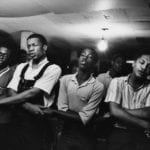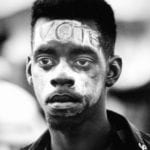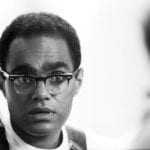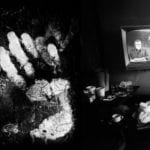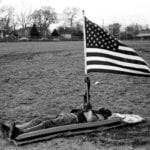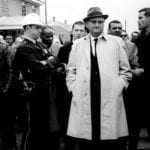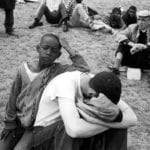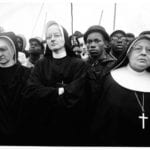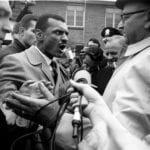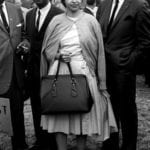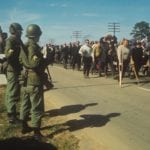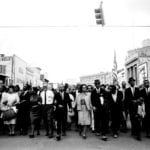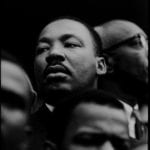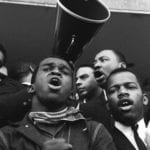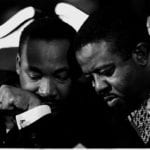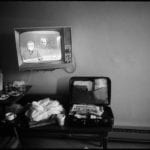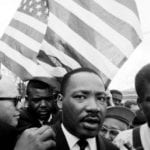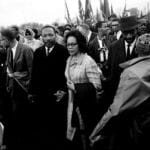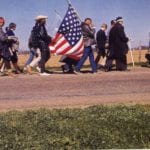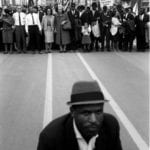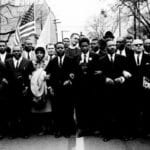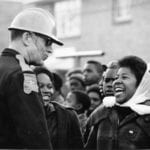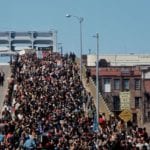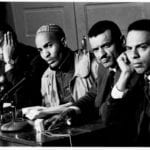September 2012
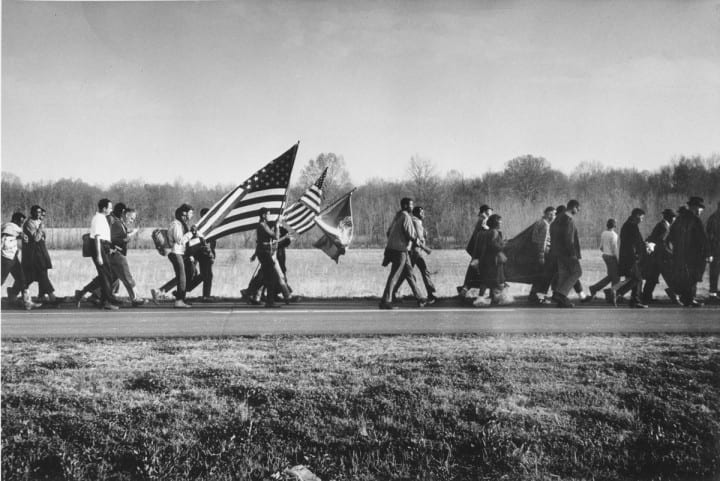
Artist Statement
Steve Schapiro grew up in New York City far from the confrontations occurring in the South. While working for LIFE magazine he read a short essay in The New Yorker by James Baldwin which talked about the situation of blacks in America. Schapiro asked if he could do a photo essay on Baldwin. LIFE agreed, and for the next six weeks Baldwin and Schapiro traveled together to Harlem, Mississippi, Durham, North Carolina, and New Orleans.
When Baldwin met with James Meredith, it was reverse segregation. The two went out to dinner and had to leave Schapiro behind. They couldn’t safely take Steve with them. When they visited Medgar Evers at his home, as a joke they threw a towel over their rental car license plate, knowing full well that they were constantly being followed.
Schapiro was assigned to do a story for LIFE on Jerome Smith, one of the original Freedom Riders. Arriving in Jackson, Mississippi, LIFE had arranged for a stringer, James Gregory, who was an Ole Miss graduate, to accompany him.
Schapiro arrived from New York with long hair and an old leather jacket. Taking one look at him, Gregory pulled him into a barber shop, said he had lost a bet and to give him a Marine haircut. He bought Steve a red Alligator shirt, white courduroy pants and a transistor radio case in which to put his camera. Then Gregory felt he could walk around with him.
In the summer of ’64 when the three Civil Rights workers disappeared, Schapiro and Gregory were the first reporters to come to Philadelphia, Mississippi. Steve started photographing a burly sheriff who came towards them. The sheriff took the camera out of Steve’s hands, opened the back, pulled out the film and threw it on the ground. They didn’t know how lucky they were. That was Sheriff Rainey, who was one of the ring leaders in the killing of the Civil Rights workers.
Steve was again in New York when it was learned that Dr. Martin Luther King had been shot. LIFE asked him to go immediately to Memphis. The first place he went to was the rooming house opposite the Lorraine Motel where Dr. King had been staying. The shot had been fired from a second floor bathroom. There was a dirty handprint on the wall which could only have been made by someone standing in the bathtub. Schapiro photographed the handprint. It ran as a full page image in LIFE.
Arriving at the room where King had been staying, Schapiro saw an open attaché case with books, papers and personal items of Dr. King’s. When on the TV, Dr. King’s image appeared behind the news commentators, Schapiro photographed the whole scene. King was gone, personal items remained, but his spirit and voice linger on forever.
Biography
Steve Schapiro felt that Robert Kennedy was the most imposing politician he ever met. And Johnny Depp is incredibly photogenic. Steve ought to know, because he has actually photographed them all: his expressive portraits of Martin Luther King, Jr., Muhammad Ali, Barbra Streisand, Marlon Brando, David Bowie, Jodie Foster, and Robert de Niro, are part of our collective visual memory. Besides his work with the stars, Schapiro and his camera accompanied the greatest political and social upheavals of the sixties and seventies. These photographs have also achieved iconic status.
He photographed the Selma March to Montgomery as well as life in Haight Ashbury in the midst of the Hippie Movement in America.
In November, his new book Steve Schapiro, Then and Now will be released with fifty years of predominantly unpublished color and bland black-and-white photographs. In the accompanying essays, Schapiro explains how they were created and describes his experiences in a lively, humorous way.
Mr. Schapiro is represented by Jackson Fine Art in Atlanta. For print sales, please contact Anna, info@jacksonfineart.com
Jerry Atnip
Jerry Atnip has a 38-year career as a commercial and fine art photographer. His images have been published in 40 countries, and since 2003, he’s held over 75 exhibitions and been presented with over 90 awards. He is also a teacher, workshop director, curator, juror, frequent lecturer and serves on the boards of several Arts &
Photography organizations, including Atlanta Celebrates Photography festival and Slow Exposures Photofestival. His work has been collected by museums, corporate and private collectors and he is an Exhibiting Member of The National Arts Club in New York.


